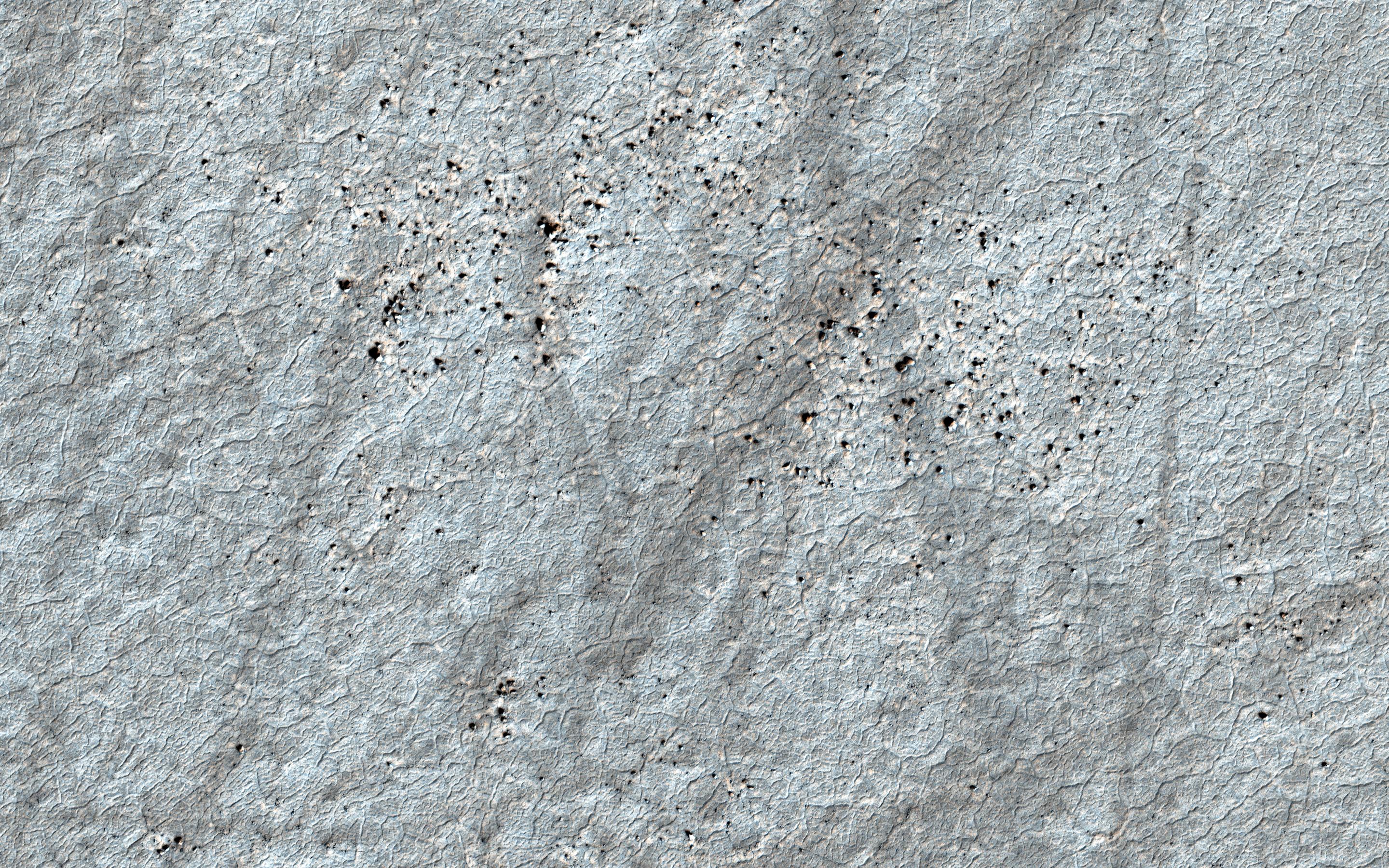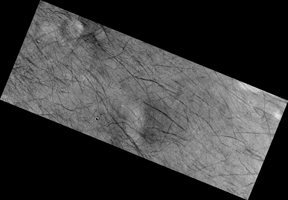
|
On Frozen Ground
- Click the image above for a larger view
- Full-Res JPEG (2880 x 1800) (1.6 MB)
- Full-Res TIFF (2880 x 1800) (15.6 MB)
Caption:

Map Projected Browse Image
Click on image for larger version
The soil surface on Mars is believed to contain water ice, especially at higher latitudes. Similar to permafrost regions on Earth, this permanently frozen water remains geologically active.
With the changing seasons, alternate cooling and warming causes the ice-cemented soil to contract and expand. Under favorable conditions these forces generate cracks into the hard frozen ground releasing the stresses caused by contraction. Over years of cyclic cracking, a curious honeycomb-like polygonal pattern arises.
The presence of these widespread patterns on Mars present valuable clues as to the occurrence or absence of ice in the subsurface. This image shows a textbook example of regular, nearly hexagonal polygon networks . The geometry of the polygons reveals hints of how long the ice has been there and how deeply buried it may be.
The map is projected here at a scale of 25 centimeters (9.8 inches) per pixel. (The original image scale is 24.8 centimeters [9.8 inches] per pixel [with 1 x 1 binning]; objects on the order of 74 centimeters [29.1 inches] across are resolved.) North is up.
Background Info:
The University of Arizona, in Tucson, operates HiRISE, which was built by Ball Aerospace & Technologies Corp., in Boulder, Colorado. NASA's Jet Propulsion Laboratory, a division of Caltech in Pasadena, California, manages the Mars Reconnaissance Orbiter Project for NASA's Science Mission Directorate, Washington.
Cataloging Keywords:
| Name | Value | Additional Values |
|---|---|---|
| Target | Mars | |
| System | ||
| Target Type | Planet | |
| Mission | Mars Reconnaissance Orbiter (MRO) | |
| Instrument Host | Mars Reconnaissance Orbiter | |
| Host Type | Orbiter | |
| Instrument | High Resolution Imaging Science Experiment (HiRISE) | |
| Detector | ||
| Extra Keywords | Color, Map, Water | |
| Acquisition Date | ||
| Release Date | 2021-01-29 | |
| Date in Caption | ||
| Image Credit | NASA/JPL-Caltech/University of Arizona | |
| Source | photojournal.jpl.nasa.gov/catalog/PIA24385 | |
| Identifier | PIA24385 | |
